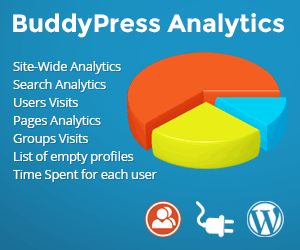It is impossible to get 95+ on Google PageSpeed Insights

You may think it will be easy to achieve an excellent score on Google PageSpeed Insights. After all, a few tweaks and optimizations should manage to get you a score exceeding 95, right? Well, the truth is a bit more harsh; it is next to impossible to get a 95+ score on PageSpeed Insights, though if you want a score of 90+, here are some tips that will help you reach that target.
Results
You will probably achieve your best score if you use the Frank theme while using the WP engine. Since the WP engine bans the use of W3 Total Cache, you will not be able to make use of the plugin but you can use other such as Minit and Autoptimize.
Importance of site speed
If someone decides to visit your website, you do not have much time to encourage them to stay and return often as well. Even though an attractive theme and high quality content will get the visitor’s attention, if your page takes too long to load, you will definitely lose a lot of visitors. In fact, a study shows that nearly 50% of people expect a website to be loaded within 2 seconds, and they leave any website which takes more than 3 seconds to load.
Furthermore, Google also considers a site’s speed when determining its ranking. The importance of the website’s speed lies in the fact that a fast website will make a customer more willing to buy your products as they will have greater confidence in you.
Google PageSpeed Insights
This is a great tool that analyzes your site’s performance and then gives you recommendations on optimizing your website. If you score over 85 on a scale of 1-100, your page is doing well.
The Page Insights calculate how you can improve your page based on:
- Time to full load page: This refers to the time spent as soon as a user sends a request for a new page till the time when the browser fully renders the page.
- Above-the-fold load time: This refers to the time spent as soon as a user sends a request for a new page till the time the browser loads above-the-fold content.
Page Insights then looks into the parts of your website which are independent from your server speed; these include a site’s CSS, Javascript, use of external resources, server configuration and a page’s HTML structure.
This is a good tool for anyone who is unsure of his site’s speed while also providing a good opportunity to learn how to optimize your website.
Measures to improve websites
Your site should be benchmarked
While PagesSpeed Insights provides one view of the site’s performance, you can use other tests such as the GTmetrix and Pingdom Website Speed Test to see how your site performs.
In the experiment performed to test how different measures could increase the ranking on PageSpeed Insights, a test site was used which had a fresh WordPress install, imported theme test data, various plugins, the Twenty Fourteen theme and Bluehost.
The site scored 74 on PageSpeed Insights.
Fast Web Host
If you use a shared server for your site, you will have a very hard time improving its loading time. You may have to spend a bit initially but if you want your website to have excellent loading speed, you need to invest in a quality web host instead of relying on shared servers.
While using Bluehost and Dreamhost returned poor results, the site performed best with a hosting service for WordPress, the WP Engine.
Good Caching Plugin
W3 Total Cache is the way to go if you are looking for a good caching plugin, which you should be as they are vital in improving the loading speed of your website. W3 is simple to setup and provides page, database, object, minify and browser caching support.
Setting up W3 Total Cache while minifying Javascript and CSS files saw the test website’s score increase by seven points.
Image optimization
Images generally result in the website taking longer to load as they are the heaviest files. Therefore, you should optimize your images for which you can use WP-Smush.it, which allows you to reduce the size of your images without decreasing their quality.
On the other hand, you can also go for the lazy loading images option. In this option, only images above the fold are loaded while the rest are only loaded when the visitor scrolls down the page.
Homepage optimization
If you want to speed up your website, you should:
- Reduce the number of posts that can be seen on your homepage if you publish blogs. Also, make sure that only excerpts are available on the homepage instead of the whole article.
- Only use the widgets which you think are essential and get rid of the rest.
- Get rid of unnecessary or unused plugins.
Use lightweight and fast theme
Use a theme that only has features which are useful for you website; otherwise you’ll put unnecessary burden on the website. A theme named Frank, which is based on speed, was chosen for the test website. This theme contains just two HTTP request and is devoid of useless images and Javascript framework, making it a responsive and simple theme.
Once the Frank theme was installed, the HTTP requests required to load the website dropped from 31 to 4.
Query strings should be removed
GTmetrix and Pingdom tend to flag the loading of content which is unnecessary with query strings; this includes Javascript files and stylesheets.
In fact, many proxies will not cache the resources if query strings are present. To remove them, you can use the Remove Query Strings From Static Resources (and yes, that is the one heck of a long name for a plugin!), which will get rid of query strings from CSS and Javascript files, thus improving the speed of the website.
The plugin is also convenient as you can activate it or deactivate it at your will.
Minify Javascript and CSS files
You can use W3 Total Cache to minify and combine the CSS and Javascript files. However, when this was done on the test site, PageSpeed Insights still claimed that more files needed to be minified. After this, the plugin Minit was used, which combined Javascript and CSS files.
Gzip compression should be enabled
If you Gzip your website, you can easily increase its loading speed while reducing the size of some files by nearly 70%. You can use compression plugins such as GZip Ninja Speed Compression and WP-HTML-Compression, both of which are popular and in-demand Gzipping plugins.
You can also use W3 Total Cache for Gzipping your website.
WordPress database optimization
Your database should be in order and tidy to ensure that your site runs smoothly. You can use the WP-Optimize plugin, which has many options that you can avail to clean up your WordPress database and also optimize it without the need of any manual queries. It can delete unapproved comments, spam, trackbacks, pingbacks and remove the trash.
On the other hand, you can use the WP-DB Manager with which you can repair your data, optimize it, restore, backup, delete and also run the selected queries.
The WP-Optimize is easier to handle as compared to the WP-DB Manager.
Use a CDN
Signing up to a content delivery network may seriously help boost the speed of your website. It will greatly reduce server lag as it stores any static resources on its network consisting of fast loading servers. MaxCDN and CloudFlare are currently popular CDNs, though you can also go for CloudFlare’s free service if you are not ready to spend much money on this yet.
Since PageSpeed Insights only checks the front-end speed, it may actually lower your score as it will detect additional Javascript files due to signing up for CDNs. Also, the CDN may set cookies and PageSpeed Insights will consider your website to be no longer a cookie-free domain, which may also hurt your score.
However, CDNs do help significantly in increasing the backend speed of the website, which PageSpeed Insights does not take into consideration but visitors do.


